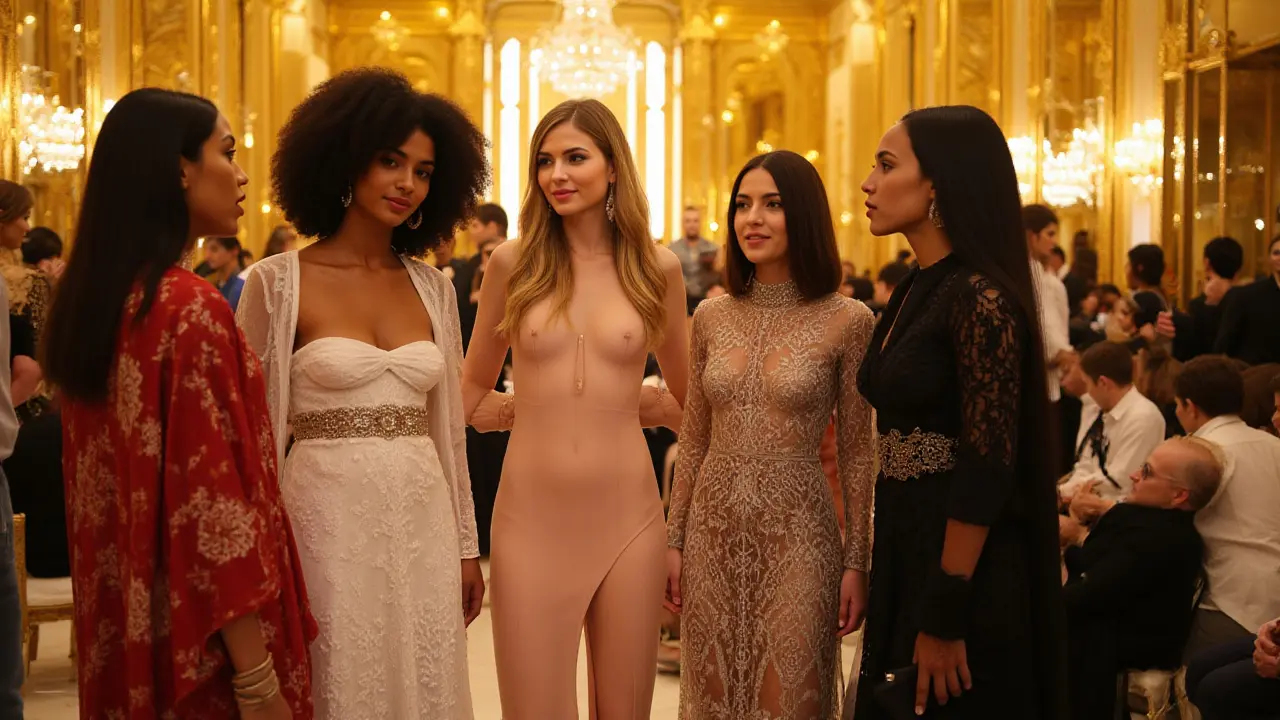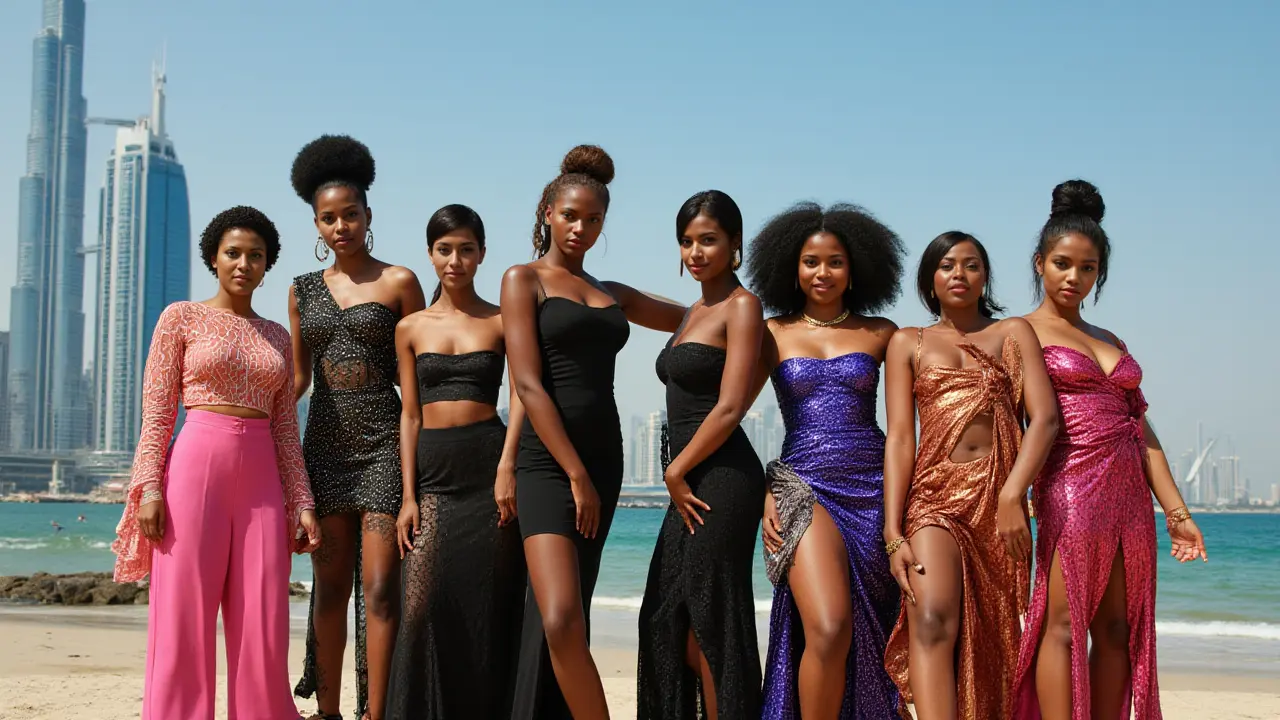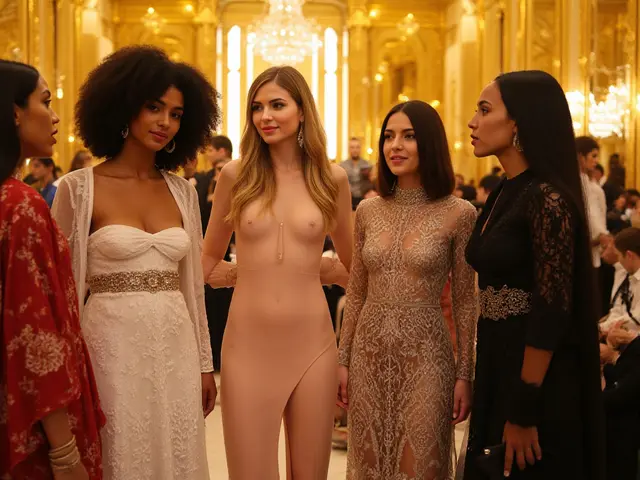Which Race Dominates the Modeling Industry? Surprising Stats and Trends

Key Facts About Race and Modeling
Ever flipped through a fashion magazine and wondered which race shows up the most on those glossy pages? The modeling industry is a sea of faces, but you might be surprised by the numbers hiding behind all that makeup and posing. According to The Fashion Spot’s latest Diversity Reports, white models make up about 48% of major runway castings worldwide as of 2024. Black models hold about 22%, while Asian models claim around 15%. Latina and Indigenous models together round out just above 8%. These numbers swing depending on the region, but the trend sticks: while diversity is improving, most models are still white. But don’t let the stats fool you—change is happening fast, and the industry is being challenged to keep up.
- White models have historically dominated, but their share is shrinking year by year.
- Black, Asian, and mixed-race models are appearing in more high-profile campaigns than ever.
- Major agencies in New York and Paris are signing diverse talent at increased rates. Elite, IMG, and Wilhelmina all boast more inclusive rosters than they did just five years ago.
- Brands face real backlash for lack of inclusivity. Fashion weeks in 2025 saw brands like Versace and Louis Vuitton highlight diversity on the runway, almost doubling last year’s nonwhite representation.
Media coverage, public demand, and models themselves are turning the tables. Social media is a loudspeaker—if a brand lacks diversity, word gets out, and fast. It’s not just about faces you see, but the stories they tell and the audiences they reach.
Short Answer: Which Race Features the Most Models?
If you want the quick scoop: as of 2024, the majority of professional models appearing in international fashion shows and ad campaigns are white, especially in Europe and North America. But this gap is closing. In Asia, Asian models carry the spotlight—especially in China, Japan, and South Korea. In Africa, Black models are increasingly in demand, both for local brands and for global export. Different continents, different trends. However, if you judge by top global fashion hotspots—think New York, Paris, Milan, and London—white models still lead, but not by as much as five years ago.
The Fashion Spot’s Diversity Reports show that nonwhite model representation climbed from 24% in 2016 to 52% in 2024 fashion seasons. It’s almost a 50/50 split. In major U.S. campaigns, you’ll see more multiethnic faces now compared to the all-white lineups of the 2000s and early 2010s. Want a sample? Check the table below for a quick breakdown of recent runway stats by race:
| Race/Ethnicity | Percentage (Global 2024) |
|---|---|
| White | 48% |
| Black | 22% |
| Asian | 15% |
| Latina/Latin American | 7% |
| Indigenous/Middle Eastern/Other | 8% |
So, white models still have the edge globally, but Black, Asian, and Latin faces are rising stars. Still, this isn’t just about numbers. Let's see how these numbers play out in the industry and why it actually matters.
Understanding Race in Modeling: Context and Cultural Shifts
Why do we even track race in modeling? It’s not just trivia. Representation matters—especially when you think about who influences trends, beauty standards, and self-confidence. For decades, the industry’s idea of “beauty” was narrow. Think blond hair, blue eyes, fair skin—basically, what you’d see in Vogue circa 1990. This standard made it tough for anyone who didn’t fit that exact look to break through. The narrative was simple: if you weren’t white (and usually thin and tall), your chances of walking for a big designer were close to zero.
But times are changing in a big way. Social movements like Black Lives Matter and Stop Asian Hate have shaken up industries everywhere—including fashion. Agencies aren’t just looking for “classic beauty” anymore; they want personality, heritage, and fresh perspectives. Designers like Kerby Jean-Raymond (Pyer Moss), Prabal Gurung, and Rihanna (Fenty) put diversity at the very core of their brands. It’s no longer just a feature—it’s a business strategy. And it brings in new, younger customers who want to see themselves represented.
Why does the reader care? Maybe you’ve felt invisible in media, or maybe you’re just tired of seeing the same faces selling everything from shampoo to sneakers. The shift in modeling is really about who gets a seat at the table and a voice in how beauty is defined.
Reality check: behind the scenes, progress is slow. The majority of top-paid “supermodels” are still white. Last year, Gigi Hadid, Kendall Jenner, and Hailey Bieber reigned on Forbes’ highest-earning list. But others—like Naomi Campbell, Adut Akech, and Liu Wen—are changing the hierarchy.

The Upside of Diversity: Why It Helps Models and Brands Alike
So what’s actually good about seeing different races in modeling? A lot, actually. For starters, it gives hope to kids everywhere that they, too, could land on the cover of Vogue. Seeing Sudanese-Australian Adut Akech in campaigns or Filipino-American Kelsey Merritt walking for Victoria’s Secret tells young people: “You belong.”
Brands know it too. A McKinsey report in 2023 found that ad campaigns with diverse lineups lifted sales by 24% on average over more homogenous campaigns. Diversity isn’t just a feel-good move—it rings the cash register. Clothes, cosmetics, and luxury brands all need broad appeal. Shoppers see someone who looks like them and connect on a personal level. And guess what? They’re more likely to add to cart.
The knock-on effect is huge. It’s not only about race but about stories and backgrounds. When Priyanka Chopra-Jonas hit Hollywood—or Alton Mason made global headlines with his Vogue cover—they inspired a wave of models from India, Africa, and Latin America. Social media pours gasoline on the fire. Instagram influencers from every continent now drive trends, sometimes with bigger audiences than traditional magazine models.
That’s why smart brands put diversity at the front. It’s a win on the runway, in stores, and for cultural change. If you’re thinking of trying modeling, now’s probably the most open it’s ever been for people of all backgrounds.
How Modeling Differs by Region and Genre
You can’t answer “what race has the most models” without looking at geography. In Asian fashion hubs—Shanghai, Tokyo, Seoul—Asian faces rule. But even there, Western models show up for high fashion and luxury brands. Flip to Latin America, and you’ll notice models with mixed European and Indigenous roots making waves, especially for swimwear, beauty, and sports brands.
Here’s the kicker—genres matter. High fashion runs mostly white, but commercial, fitness, alternative, and digital modeling all present a more mixed picture. In fitness campaigns or tech wearables ads, models can be any race. Plus-size and mature-aged agencies are pushing for even more inclusivity—age, body type, and gender as well as race.
- Editorial work, especially in U.S.-based glossies, is more diverse now than ever before. The last five Vogue covers included Black, Asian, Latina, and mixed-race stars.
- Runway is where you see the big shifts, with Paris and Milan catching up to New York in casting nonwhite talent.
- Catalog and beauty shoots? The majority skew white or ethnically ambiguous, though multicultural campaigns are growing fast.
- In Africa, models like Maria Borges and Mayowa Nicholas have gone global, inspiring more young Black talent to head to Europe and the U.S. for runway opportunities.
- In Latin America, models such as Lineisy Montero are redefining hair and skin representation in beauty campaigns.
Don’t forget the digital explosion: Virtual models like Shudu (a Black, computer-generated influencer) prove that diversity isn’t just about human genetics anymore—the whole idea of representation is evolving along with technology.
Tips for Aspiring Models From Every Background
So, you want to see yourself on that billboard or runway? Good news: never has the gate to the fashion world been so wide open. Here’s what you should keep in mind if you’re thinking about jumping in:
- Embrace what makes you different. Agencies don't just want 'another face.' Skin tone, hair texture, features—these are assets, not obstacles.
- Follow and learn from game-changers. Models like Winnie Harlow (vitiligo) or Shaun Ross (albinism) broke through with unique looks and big personalities.
- Your “book” (portfolio) should be diverse. Show you can work everything from high fashion to streetwear—different looks mean different gigs.
- Social media is your stage. Use Instagram, TikTok, and Threads to get noticed. Agencies have snatched up newcomers with huge digital footprint.
- Scout reputable agencies—avoid scams. Do your research, and check reviews before signing anything.
If you’re a parent or mentor, support confidence over conformity. Encouraging diverse talent means embracing all backgrounds, shapes, and stories. The industry is finally catching up to the real-world mix you see on city streets everywhere. Don’t wait for permission—be your own hype man.
So next time you see an ad or scroll your feed, notice the faces. The industry’s changing, and diversity in modeling is fast becoming the new gold standard.

